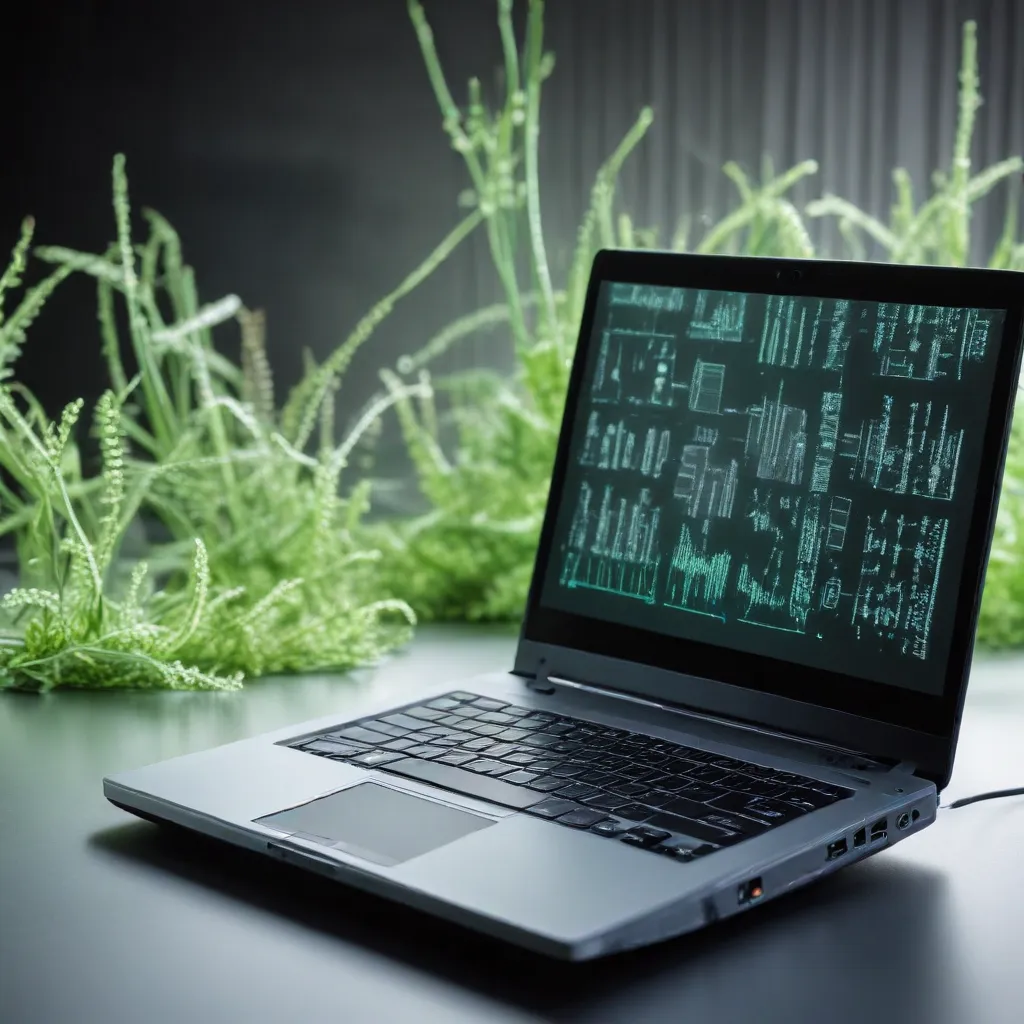
Keeping Your Laptop Cool Under Intense Computational Loads
As a seasoned IT professional, I’ve seen firsthand the critical importance of effective laptop cooling solutions, especially for those working in the demanding fields of bioinformatics and computational biology. These disciplines often require running intensive applications and processing vast amounts of data, which can quickly push laptops to their thermal limits, leading to performance throttling, system crashes, and even hardware damage if left unchecked.
In this comprehensive guide, I’ll share practical tips and in-depth insights to help you maintain optimal laptop performance and prevent overheating issues while tackling your bioinformatics and computational biology workloads.
Understanding the Thermal Challenges of Bioinformatics Workloads
Bioinformatics and computational biology tasks are notorious for their high computational demands. From running complex sequence alignment algorithms and constructing phylogenetic trees to processing large genomic datasets and running machine learning models, these workloads can push a laptop’s processor, graphics card, and other components to their limits.
The combination of intensive CPU and GPU utilization, along with the heat generated by the sheer volume of data processing, can quickly cause a laptop’s internal temperature to soar. This elevated heat can lead to a range of performance issues, including:
-
Throttling and Slowdowns: As the laptop’s internal temperature rises, the CPU and GPU may automatically throttle their clock speeds to prevent overheating, resulting in significantly reduced processing power and longer computation times.
-
System Crashes and Freezes: In extreme cases, the excessive heat can cause the laptop to crash, freeze, or even shut down unexpectedly, disrupting your work and potentially causing data loss.
-
Hardware Damage: Prolonged exposure to high temperatures can degrade the laptop’s components over time, leading to premature failures and a shortened lifespan for your device.
Prioritizing Laptop Cooling for Bioinformatics and Computational Biology
Given the critical nature of these workloads and the potential consequences of overheating, it’s essential to prioritize effective laptop cooling solutions. By implementing the right strategies, you can ensure your device maintains peak performance, reliable operation, and a longer overall lifespan.
Laptop Cooling Solutions: Hardware and Software Approaches
To address the thermal challenges faced by bioinformatics and computational biology researchers, a multi-pronged approach leveraging both hardware and software solutions is recommended.
Hardware-based Cooling Solutions
-
Laptop Cooling Pads or Stands: These accessory devices feature built-in fans that actively draw heat away from the laptop’s underside, helping to dissipate the excess warmth. Look for cooling pads with adjustable fan speeds, multiple fan configurations, and ergonomic designs to elevate your laptop for improved airflow.
-
External Laptop Coolers: Standalone external cooling units with their own power sources can provide even more robust cooling power than standard laptop cooling pads. These coolers often feature high-performance fans, heat sinks, and even Peltier-effect cooling elements to maximize heat dissipation.
-
Laptop Heatsink and Fan Upgrades: For more advanced users, upgrading the laptop’s internal heatsink and cooling fan assemblies can significantly improve thermal management. This may involve replacing the stock components with higher-performance alternatives designed for enhanced cooling.
-
Laptop Repasting: Over time, the thermal paste between the CPU/GPU and their heatsinks can degrade, reducing heat transfer efficiency. Carefully reapplying a fresh layer of high-quality thermal paste can help restore optimal cooling performance.
Software-based Cooling Solutions
-
Laptop Cooling Software: Specialized software applications can monitor your laptop’s internal temperatures and proactively adjust fan speeds, processor clock rates, and other settings to maintain optimal thermal levels. Examples include SpeedFan, HWMonitor, and ThrottleStop.
-
Power Management Settings: Adjusting your laptop’s power management settings can also help mitigate overheating. Reducing the maximum processor state, disabling turbo boost, and optimizing power plans can help keep temperatures in check.
-
Task Scheduling and Resource Allocation: When running computationally intensive bioinformatics or computational biology workloads, carefully scheduling tasks and allocating system resources can help prevent thermal issues. Prioritizing the most critical processes and offloading less essential tasks can reduce the overall strain on your laptop’s hardware.
-
Proactive Monitoring and Alerting: Implementing a system to monitor your laptop’s temperatures and receive timely alerts when critical thresholds are approached can allow you to take immediate action to mitigate overheating before it becomes a problem.
Maintaining Laptop Cleanliness and Airflow
Alongside the hardware and software solutions, ensuring your laptop’s physical environment and maintenance routines contribute to effective cooling is crucial. Here are some essential tips:
-
Regular Dust Removal: Carefully clean the laptop’s air vents, fans, and heatsink assemblies to remove any accumulated dust or debris that can impede airflow and heat dissipation.
-
Avoid Obstructed Airflow: Ensure your laptop is placed on a flat, well-ventilated surface, and avoid using it on soft surfaces like beds or laps, which can block the air vents.
-
Ambient Temperature Control: If possible, work in an environment with moderate ambient temperatures, as high-temperature surroundings can make it more challenging for your laptop to effectively dissipate heat.
Balancing Performance and Thermal Limits
While maximizing laptop cooling is essential, it’s also important to find the right balance between performance and thermal management. Overly aggressive cooling solutions or settings can sometimes lead to increased fan noise, reduced battery life, and even system instability.
Experiment with different cooling approaches and monitor your laptop’s behavior to determine the optimal configuration that delivers the necessary computational power while maintaining acceptable temperatures and noise levels.
Conclusion: Keeping Your Laptop Cool and Computational Engines Running
Bioinformatics and computational biology workloads demand exceptional performance from laptops, pushing them to their thermal limits. By implementing a comprehensive cooling strategy, combining hardware and software solutions, and maintaining proper laptop care, you can ensure your device remains cool, reliable, and able to handle even the most demanding computational tasks.
Remember, proactive cooling management is the key to unlocking the full potential of your laptop and maintaining peak productivity in your bioinformatics and computational biology endeavors. Stay vigilant, experiment with different approaches, and enjoy the benefits of a well-cooled, high-performing laptop.












